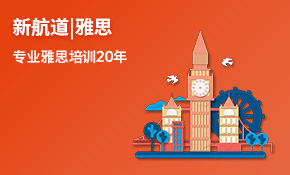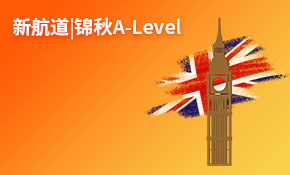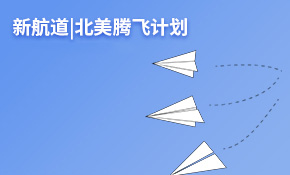雅思阅读真题解析-剑14Test1Passage2-The growth of bike-sharing-段落信息配对题
雅思阅读真题解析-剑14Test1Passage2-The growth of bike-sharing-段落信息配对题
段落信息配对题
Questions 14—18
Reading Passage 2 has seven paragraphs, A-G.
Which paragraph contains the following information?
Write the correct letter,A-G, in boxes 14-18 on your answer sheet
NB You may use any letter more than once.
题目有NB,所以有一段选两次。
Q14
a description of how people misused a bike-sharing scheme
分析
题干可以划关键词的有people和misused。题干中的misused在原文中应该会对应具体的滥用,如破坏,乱停等。这道题的位置应该出现在具体项目出现的段落靠后的地方或者在下一段。
定位
E Theo Molenaar, who was a system designer for the project, worked alongside Schimmelpennink. I remember when we were testing the bike racks, he announced that he had already designed better ones. But of course, we had to go through with the ones we had.’The system, however, was prone to vandalism and theft. ‘After every weekend there would always be a couple of bikes missing,’Molenaar says. I really have no idea what people did with them, because they could instantly be recognised as white bikes.’But the biggest blow came when Postbank decided to abolish the chip card, because it wasn’t profitable. ‘That chip card was pivotal to the system,’Molenaar says. ‘To continue the project we would have needed to set up another system, but the business partner had lost interest.’
答案
上文第三句,第四句和第七句有转折需要看。上文第三句中的vandalism and theft【破坏与盗窃】对应题干中的how people misused,上文第三句中的the system对应题干中的a bike-sharing scheme,所以这道题答案是E。
Q15
an explanation of why a proposed bike-sharing scheme was turned down
分析
题干可以划关键词的有why和turned down【关闭;拒绝】。题干中的turned down在原文中可能会对应refuse或object等词。这道题的位置应该出现在项目出现了之后的地方。
定位
C Schimmelpennink seized this opportunity to present a more elaborate Witte Fietsnplan to the city council. ‘My idea was that the municipality of Amsterdam would distribute 10,000 white bikes over the city, for everyone to use,’he explains. ‘I made serious calculations. It turned out that a white bicycle-per person, per kilometer-would cost the municipality only 10% of what it contributed to public transport per person per kilmetre.’Nevertheless, the council unanimously rejected the plan. ‘They said that bicycle belongs to the past. They saw a glorious future for the car,’says Schimmerlpennink. But he was not in the least discouraged.
答案
上文倒数第三句出现了转折,所以前后句子都有可能出题。这句中的unanimously rejected 【一致地反对】对应题干中的was turned down,这句中的plan指代这段第 一句中的Witte Fietsnplan,对应题干中的a proposed bike-sharing scheme,所以这道题选C。
Q16
a reference to a person being unable to profit from their work
分析
题干可以划关键词的有a person和 unable to porfit。题干中的a person在原文中应该会对应具体的人名。题干中的unable to profit在原文中找关于钱的否定即可。
定位
F Schimmelpennink was disappointed, but - characteristically - not for long. In 2002 he got a call from the French advertising corporation JC Decaux, who wanted to set up his bike-sharing scheme in Vienna. That went really well. After Vienna, they set up a system in Lyon. Then in 2007, Paris followed. That was a decisive moment in the history of bike-sharing. The huge and unexpected success of the Parisian bike-sharing programme, which now boasts more than 20,000 bicycles, inspired cities all over the world to set up their own schemes, all modelled on Schimmelpennink‘s. ‘It’s wonderful that this happened,’he says. ‘But financially I didn’t really benefit from it, because I never filed for a patent.’
答案
上文第二句,第三句,第四句,第五句,第六句都有数字和大写,这个时候意味着他在用具体的例子,我们可以优先考虑前两句和后两句。
上文最后一句中的financially【财务上,金钱上】对应题干中的profit,上文最后一句中的didn’t really benefit from对应题干中的unable to,上文最后一句中的I (指的是Schimmelpennink)对应题干中的a person,所以这道题答案是F。
Q17
an explanation of the potential savings a bike-sharing scheme would bring
分析
题干可以划关键词的有potential saving和would bring。题干中的potential savings【潜在的节约】在原文中可能会对应关于钱,能源或时间的节省,可能会出现比较,如用这个项目消耗的能源比以前的少。题干中的would bring是对将来的假设,所以在原文中也很有可能对应将来时态。
定位
C Schimmelpennink seized this opportunity to present a more elaborate Witte Fietsnplan to the city council. ‘My idea was that the municipality of Amsterdam would distribute 10,000 white bikes over the city, for everyone to use,’he explains. ‘I made serious calculations. It turned out that a white bicycle-per person, per kilometer-would cost the municipality only 10% of what it contributed to public transport per person per kilmetre.’Nevertheless, the council unanimously rejected the plan. ‘They said that bicycle belongs to the past. They saw a glorious future for the car,’says Schimmerlpennink. But he was not in the least discouraged.
答案
上文第二句和第三句都出现了具体的数字,所以要看。上文第三句中的would cost the municipality only 10% of对应题干中的an explanation of the potential savings,这句也用了题干中的对将来的假设,所以这道题选C。
Q18
a reference to the problems a bike-sharing scheme was intended to solve
分析
题干可以划关键词的有problems(一般对应不好的问题)和intended to solve。这道题中的intended solve可以看出,这是在讲述项目的目的,所以紧跟着项目名字出现的,所以可以去文章前半部分找。
定位
A The original idea for an urban bike-sharing scheme dates back to a summer’s day in Amsterdam in 1965. Provo, the organisation that came up with the idea, was a group of Dutch activists who wanted to change society. They believed the scheme, which was known as the Witte Fietsenplan, was an answer to the perceived threats of air pollution and consumerism. In the centre of Amsterdam, they painted a small number of used bikes white. They also distributed leaflets describing the dangers of cars and inviting people to use the white bikes. The bikes were then left unlocked at various locations around the city, to be used by anyone in need of transport.
答案
上文第 一句出现了a bike-sharing scheme,第三句中出现的was an answer to【…的解决方案/答案】对应题干中的was intended to solve,上文第三句中的threats of air pollution and consumerism对应题干中的the problems,所以这道题答案是A。
分享:新航道雅思培训















